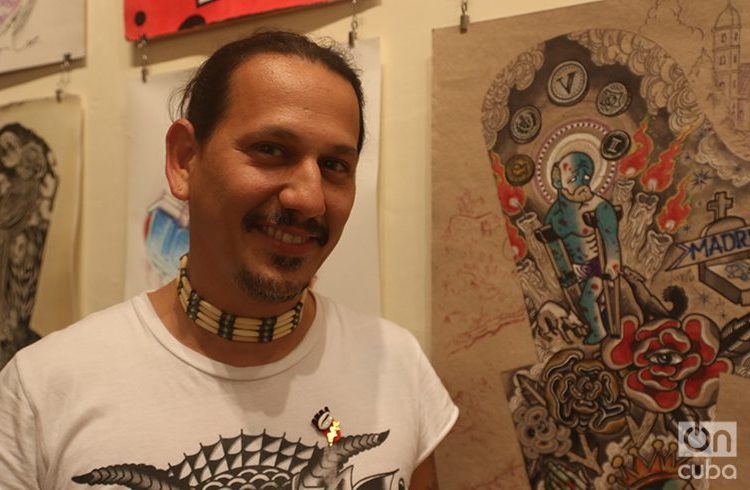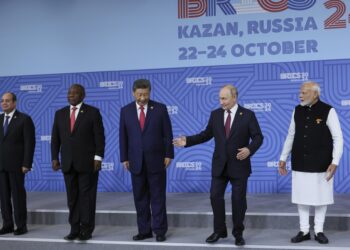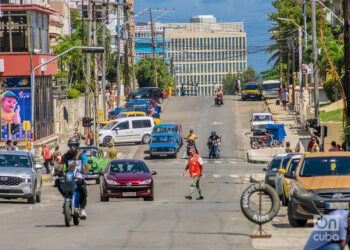Artist Leo Canosa and Ailed Duarte – his wife – opened the first professional tattoo studio in Cuba in January 2015.
“That was an old dream we had as a couple. We had spent a lot of time wanting to create a place for tattoos in Havana because there were no spaces of that type on the island,” Leo says.
At that time body art did not have – it still doesn’t have – a legal backing in Cuba, so they decided to present the project as a studio gallery and to give a space there to other types of activities. In its first two years La Marca has made around 2,000 tattoos, seven exhibitions and five concerts under the A. Muleta Music label; it has backed independent cinema and censored plays, creating in Old Havana a community around design and visual art.
Now the festivities for the second anniversary have started with a new exhibit called Remanga&Son, in which renowned Cuban tattoo artists and designers like Ramiro Zardoya, Raúl Valdés (Raupa) and Nelson Ponce present on diverse supports 12 “sleeve” sketches: tattoos that take up shoulder, arm and forearm.

“In these two years we have been able to make more friends than enemies and this exhibit confirms it, since we see on the walls the sleeves of many friends from Santiago de Cuba, Sancti Spíritus who are tattooing right now in La Marca. I will not take stock of what tattoos have been in the last year – I keep saying that it is alegal [under the counter] -, rather regrettably in Cuba’s conditions, but I believe that it is also part of our job to achieve that it be accepted,” Marta, one of La Marca’s group, says.
Leo Canosa is the oldest among them. His more than 20 years of experience and now his work in La Marca place him among the leading artists of this movement.
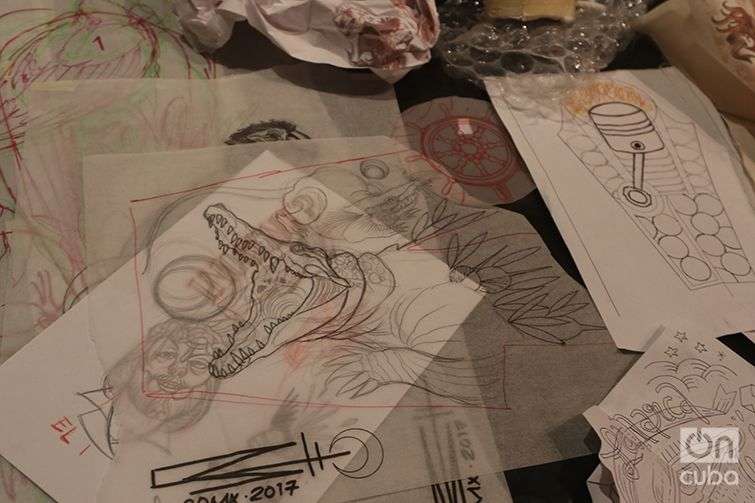
And speaking of the two years of the only professional tattoo studio-gallery in Cuba, which has now become a cultural center in the old part of Havana, OnCuba chatted with him.
What has been your experience in the world of tattoos and how did you get to found La Marca?
I’m self-taught. As a child I always drew and later I studied visual art because I had an uncle who greatly influenced me. I had that artistic education through him.
In 1998 we created together with Hans Mario León the “Lienzos vivientes (Living Canvases) project, in which for the first time a Cuban institution, the Hermanos Saíz Association (AHS), recognized the profession of tattoo artists on the island. A great many events and exhibitions dedicated to body art were held there.
Creating that studio was always our dream. We wanted to have that space in Havana that needed it so much, because there is no referent on tattoos here. In Cuba tattoos are not considered good art, it is still something very new and our struggle here is to legalize it.
How difficult is it for tattoo artists to work in that legal limbo? How do you get the supplies for your business?
This has been working hard and demonstrating that what we do is a form of art, the only thing that’s different is the support. We presented it as an artists’ studio because there are no licenses for tattooing and then we organize here other things like exhibitions, workshops, concerts.
We bring everything from the United States or Canada. Luckily most of those who work with us are able to travel, therefore we go to tattoo conventions, we buy material and we import it. It’s a bit difficult because we can’t bring much because of the Customs regulations, so we have to divide it, in short, we do our own magic.
How is the routine process with clients before they are tattooed?
First we interview them and we talk about what they want. We always try to work with ideas, not with catalogues, to not repeat anything and for it to be a creative process between the artist and the clients. After we have the idea, we draw it and give them another appointment so they can see the design we created and if they like it we finally arrange a date for them to come and have their tattoo made.
All of La Marca’s artists tattoo with machines but Roberto Ramos does it by hand, it’s a bit more rustic. The machine is more precise, cleaner, but there are many people who prefer getting a handmade tattoo, they prefer that traditional method.
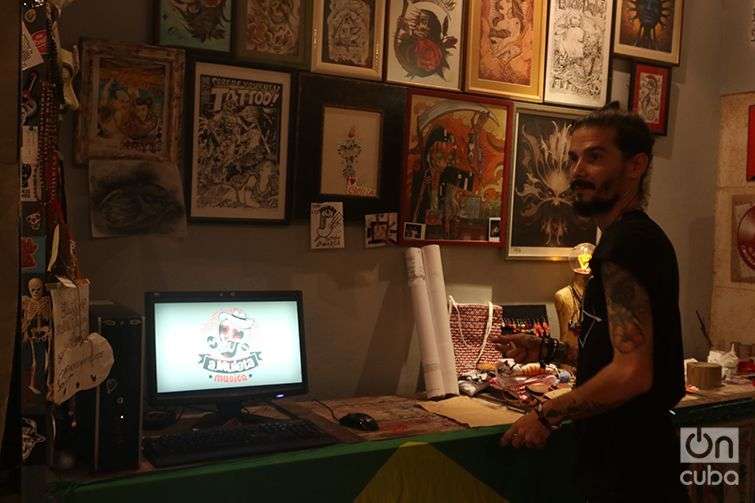
What type of tattoos do people choose the most?
Since we don’t work with a catalogue but rather with the artists’ portfolios with their diverse styles, we almost always force our clients to first see what there is so they can identify a style and based on that we make personal designs, author tattoos, things we come up with here.
We also receive many tourists who tend to favor the Cuban symbols. Many choose Viñales Valley, the skyline of the island of Cuba, an elegguá, palm trees, the Cuban trogon, the butterfly jasmine flower.
And what style does Leo Canosa prefer?
I really like the design of the old school, everything that’s Japanese, but people seek me for realism, and since it’s what I do most, they identify me with that.
Why do you think the preference for tattoos has proliferated in Cuba?
The taste has always existed, but the thing is that there isn’t much of a tattoo culture. People have things made because they see them on artists. Fortunately, with that promotion we have with author tattoos, and all the artists who have collaborated with us during these two years, people have another view of tattoos that can be much more than a tribal or a panther tattoo design, it is being assumed as a form of expression.
In these times in which there is so much diversity, what people are already seeking is the author tattoo. The industry has advanced so much that people who tattoo are graduates of art and design schools who leave in the tattoo their entire creative universe.
Here we have also linked tattoos to other manifestations like design, engraving and in that way we have approached people who perhaps weren’t coming for a tattoo but rather for the concerts or the exhibitions but in this way they discover other forms of understanding tattoos.
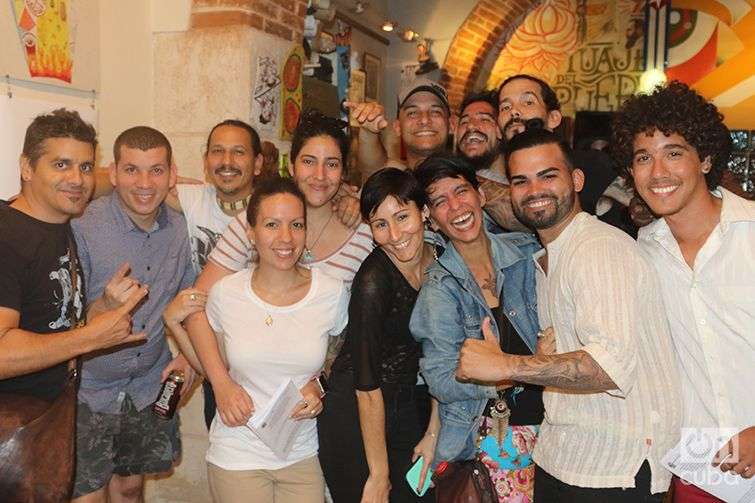
What’s the most important thing that has happened to you in these two years?
We have had an impressive amount of national and international friends and collaborators. The tattoo artists here have been surprised because worlds we didn’t know of have opened up for us, for example poster art which was something totally unknown and based on the rapprochement to graphic designers we got to know that world and that has enriched us, it has given us the desire to continue, of doing different things.
We had several actions during the Havana Biennial; one of the most important was receiving Dr. Lakra, a great Mexican visual and tattoo artist. The working link after that has been really great, he has sent us his colleagues and we have had exchanges with many other artists.
What does La Marca aspire to in 2017?
Our aim is to continue working so people see tattoos in another way, especially in the cultural institutions that are still somewhat distrustful of what we do; we have to pressure so that tattooing is legalized in Cuba, and we would also like to establish links with the Ministry of Public Health to have medical and health advice.
There is no other studio of this type in Cuba, but it would be great if we had competition. That’s what this gallery is all about, that the concept of tattooing in Cuba increasingly develops and that others take our work as an example. Unfortunately it has not been like this, on the contrary. They have seen us as a threat, especially since last May when the government started closing tattoo studios and many thought we had unleashed that witch hunt. And since in the end we were not bothered that increased even more what they thought of us.
The thing is that here in addition to tattooing we are concerned with creating a tattoo culture. We work always thinking about an exhibit, about a course, about a project with children…. It’s incredible how so many artists from all over the world have gotten here saying that La Marca looks better than their own galleries. And the thing is that here we live for this. We have given it a lot of heart since the start.

